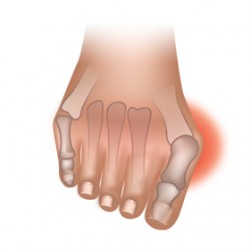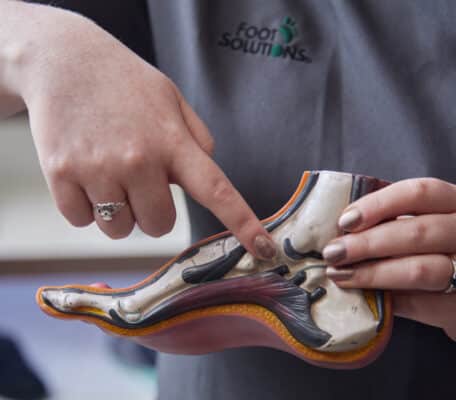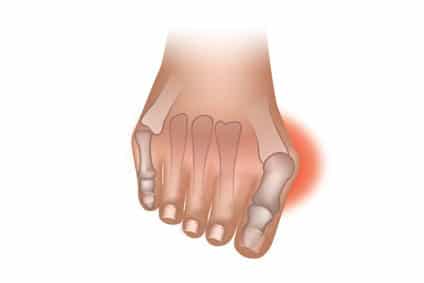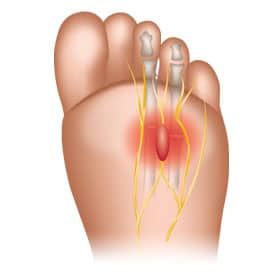Bunions are a painful foot condition that most commonly affect women. In fact, women report bunions more than ten times as often as men. Bunions are easily recognised by their bony appearance on the foot.
What is a Bunion?
 A bunion is an enlarged area of the joint located at the base of the big toe. The bunion is caused by improper alignment of the joint or even excess bone formation. The improper alignment causes the toe to point outward, toward the small toes. This condition is progressive, and is likely to worsen with time. The joint may become very tender and painful, and bursitis can develop.
A bunion is an enlarged area of the joint located at the base of the big toe. The bunion is caused by improper alignment of the joint or even excess bone formation. The improper alignment causes the toe to point outward, toward the small toes. This condition is progressive, and is likely to worsen with time. The joint may become very tender and painful, and bursitis can develop.
Bursitis occurs when the bursa, which is a small sac of fluid next to the joint, becomes inflamed. Bursitis causes pain, tenderness, swelling, and redness. Over time, arthritis can develop in the joint.
Bunions can also develop at the base of the smallest toe. This type of bunion is known as a tailor’s bunion or a bunionette.
What Causes Bunions?
It is commonly believed that a malformation of the bone caused by genetic factors leads to the development of bunions. Many people believe that wearing high heels or other types of shoes causes bunions; there is not scientific proof to support that footwear directly causes bunions, but uncomfortable shoes can certainly exacerbate bunions and cause pain. Bunions can also be caused by injuries, like sprains or fractures, rheumatoid arthritis, neuromuscular disorders, and limb length variations.
Treatment for Bunions
In some cases bunions cause symptoms, while in other cases, they do not. The most common symptom of bunions is pain in the foot near the affected area. Pain is often worse while walking or wearing shoes, and rest usually helps to relieve pain. So how are bunions treated? Treatments can include the following:
- The most basic treatment for bunions is rest.
- Comfortable shoes that do not contribute to the problem by causing inflammation or constricting the foot are a valuable treatment for bunion pain.
- Anti-inflammatory medications can ease discomfort caused by bunions by reducing inflammation and relieving pain. These types of medication include Ibuprofen, aspirin and more.
- Ice works in much the same way as anti-inflammatory medications, by reducing inflammation to the affected area. Rest combined with ice is often an effective treatment for bunions.
- When more conservative measures like rest, ice, and anti-inflammatories are ineffective, a local injection of cortisone can be given to reduce pain and inflammation in the area of the bunion.
- Surgical treatment is a last option when other forms of treatment fail to provide relief from bunions. Surgery can correct the abnormality that causes bunions.
Can Bunions Be Prevented?
If bunions are identified early, their development can be slowed or stopped. Delaying the progression of bunions and preventing symptoms relies upon wearing proper footwear (and in some cases, customisedarch supports, and avoiding certain activities.
 If you have bunions, you can relieve pain and prevent the progression of your condition by wearing shoes that are customised to fit your feet and accommodate your condition. Visit Foot Solutions for assistance.
If you have bunions, you can relieve pain and prevent the progression of your condition by wearing shoes that are customised to fit your feet and accommodate your condition. Visit Foot Solutions for assistance.
Our highly-trained experts will assess your feet and perform fit modifications to help you find the perfect shoes. We have shoes that are both stylish and comfortable, so that you can care for your feet without sacrificing style. Visit Foot Solutions for expert advice on caring for your feet today.










